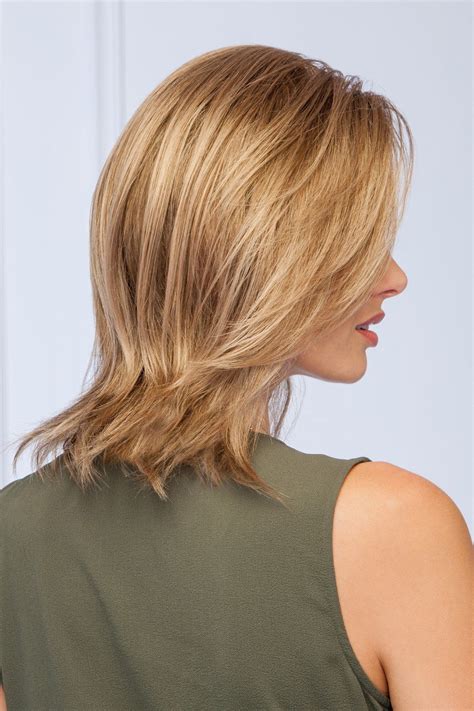If you’re looking for a wig that looks and feels as natural as your own hair, a low density wig is the perfect option. These wigs are made with a lower density of hair fibers than traditional wigs, which gives them a more realistic and natural appearance.

What are Low Density Wigs?
Low density wigs are made with a lower number of hair fibers per square inch than traditional wigs. This results in a wig that is less bulky and more lightweight, making it more comfortable to wear. Low density wigs also have a more natural appearance than traditional wigs, as they more closely resemble the density of natural hair.
Why Choose a Low Density Wig?
There are many benefits to choosing a low density wig. These wigs are:
- More natural-looking: Low density wigs have a more realistic appearance than traditional wigs, as they have a lower density of hair fibers.
- More comfortable to wear: Low density wigs are less bulky and more lightweight than traditional wigs, making them more comfortable to wear for extended periods of time.
- Easier to style: Low density wigs are easier to style than traditional wigs, as the hair is less dense and more manageable.
- Less expensive: Low density wigs are typically less expensive than traditional wigs, as they require less hair fibers to make.
How to Choose the Right Low Density Wig
When choosing a low density wig, there are a few things to keep in mind:
- Density: The density of a wig is measured in grams per square meter (g/m2). The lower the density, the more natural-looking the wig will be. Low density wigs typically have a density of 100-150 g/m2.
- Cap construction: The cap construction of a wig refers to the way the hair is attached to the wig cap. There are two main types of cap construction: monofilament and lace front. Monofilament caps are made with a thin, transparent material that allows the hair to be parted and styled in any direction. Lace front caps are made with a delicate lace material that creates a natural-looking hairline.
- Hair type: Low density wigs can be made with a variety of hair types, including human hair, synthetic hair, and a blend of human and synthetic hair. Human hair wigs are the most expensive, but they offer the most natural look and feel. Synthetic hair wigs are less expensive, but they may not look as natural as human hair wigs. Blended wigs offer a good balance of price and quality.
How to Care for a Low Density Wig
To keep your low density wig looking its best, it is important to care for it properly. Here are a few tips:
- Wash your wig regularly: Low density wigs should be washed every 4-6 weeks. Use a mild shampoo and conditioner specifically designed for wigs.
- Condition your wig regularly: Conditioning your wig will help to keep it soft and manageable. Use a leave-in conditioner or a deep conditioner every 2-3 weeks.
- Avoid heat styling: Heat styling can damage the hair fibers in a low density wig. If you must use heat styling, use it on a low setting and be sure to use a heat protectant spray.
- Store your wig properly: When you’re not wearing your wig, store it in a cool, dry place. Avoid storing your wig in direct sunlight or in a humid environment.
Conclusion
Low density wigs are a great option for people who want a natural-looking, comfortable, and affordable wig. By following the tips in this article, you can choose and care for a low density wig that will give you years of enjoyment.
Table 1: Comparison of Low Density Wigs and Traditional Wigs
| Feature | Low Density Wigs | Traditional Wigs |
|---|---|---|
| Density | 100-150 g/m2 | 150-250 g/m2 |
| Appearance | More natural | Less natural |
| Comfort | More comfortable | Less comfortable |
| Price | Less expensive | More expensive |
Table 2: Different Types of Cap Construction for Low Density Wigs
| Cap Construction | Description |
|---|---|
| Monofilament | Thin, transparent material that allows the hair to be parted and styled in any direction |
| Lace front | Delicate lace material that creates a natural-looking hairline |
Table 3: Different Types of Hair for Low Density Wigs
| Hair Type | Description |
|---|---|
| Human hair | Most expensive, but most natural-looking and feeling |
| Synthetic hair | Less expensive, but may not look as natural as human hair |
| Blended hair | Good balance of price and quality |
Table 4: Tips for Caring for a Low Density Wig
| Tip | Description |
|---|---|
| Wash your wig regularly | Every 4-6 weeks with a mild shampoo and conditioner |
| Condition your wig regularly | Every 2-3 weeks with a leave-in conditioner or a deep conditioner |
| Avoid heat styling | Use it on a low setting and be sure to use a heat protectant spray |
| Store your wig properly | In a cool, dry place away from direct sunlight and humid environments |
